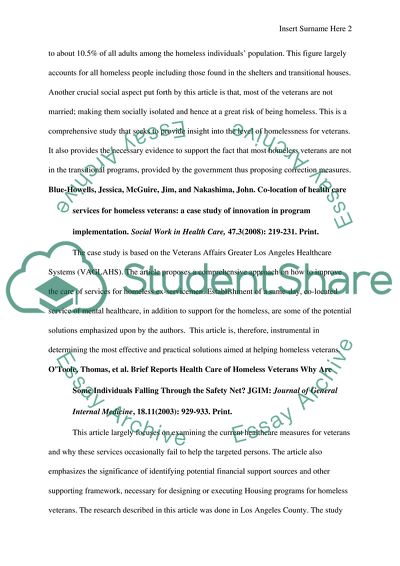Cite this document
(Homeless Veterans Annotated Bibliography Example | Topics and Well Written Essays - 1250 words, n.d.)
Homeless Veterans Annotated Bibliography Example | Topics and Well Written Essays - 1250 words. https://studentshare.org/politics/1799981-investigate-in-some-depth-a-controversial-issue-and-propose-a-compromise-resolution-policy-for-this-issue-homeless-veterans-is-the-issue-chosen
Homeless Veterans Annotated Bibliography Example | Topics and Well Written Essays - 1250 words. https://studentshare.org/politics/1799981-investigate-in-some-depth-a-controversial-issue-and-propose-a-compromise-resolution-policy-for-this-issue-homeless-veterans-is-the-issue-chosen
(Homeless Veterans Annotated Bibliography Example | Topics and Well Written Essays - 1250 Words)
Homeless Veterans Annotated Bibliography Example | Topics and Well Written Essays - 1250 Words. https://studentshare.org/politics/1799981-investigate-in-some-depth-a-controversial-issue-and-propose-a-compromise-resolution-policy-for-this-issue-homeless-veterans-is-the-issue-chosen.
Homeless Veterans Annotated Bibliography Example | Topics and Well Written Essays - 1250 Words. https://studentshare.org/politics/1799981-investigate-in-some-depth-a-controversial-issue-and-propose-a-compromise-resolution-policy-for-this-issue-homeless-veterans-is-the-issue-chosen.
“Homeless Veterans Annotated Bibliography Example | Topics and Well Written Essays - 1250 Words”. https://studentshare.org/politics/1799981-investigate-in-some-depth-a-controversial-issue-and-propose-a-compromise-resolution-policy-for-this-issue-homeless-veterans-is-the-issue-chosen.


